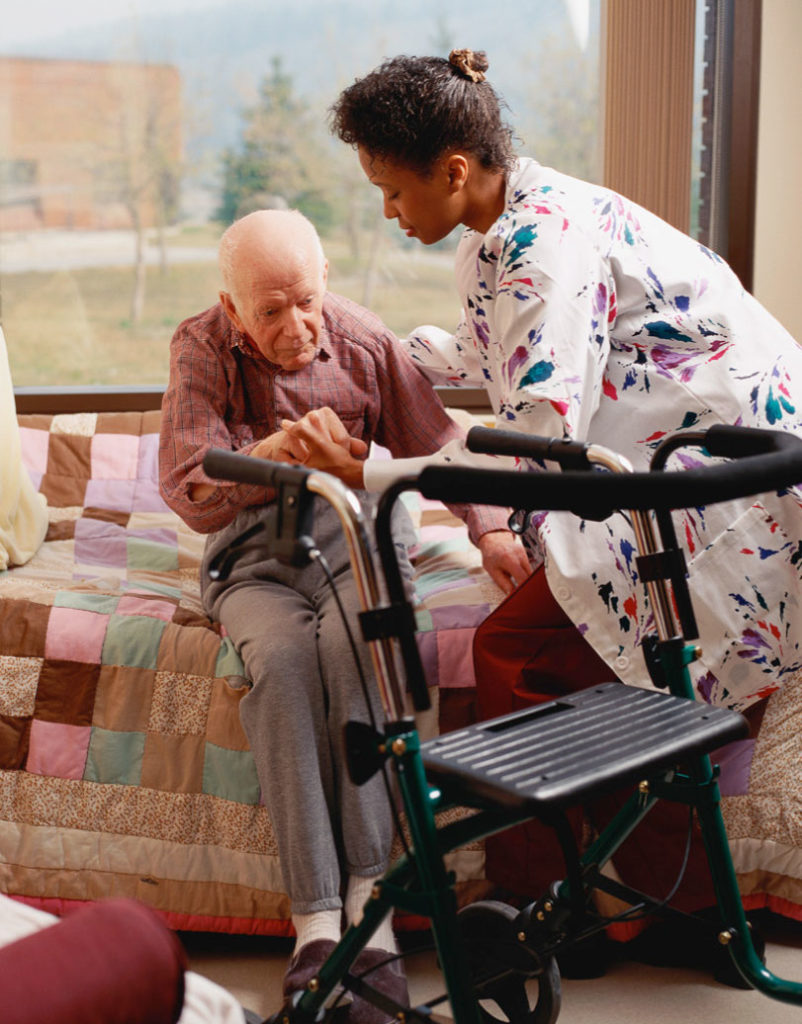The opening of Sunday’s gospel story dramatizes the suffering of a leper in Jesus’ time. A leper implores Jesus’ help, begs for it, kneels in hope. The story provides us no ugly details of the man’s appearance, but rather stresses how much he wants to be healed and how certain he is that Jesus can heal him. The leper brings to his encounter with Jesus an attitude of profound need and expectant hope.
Lepers in Jesus’ time and until our century lived their lives apart from other people. As the law cited in Sunday’s first reading prescribes, lepers must live “outside the camp.” Probably out of caution people lumped many skin conditions in with leprosy.
Interestingly, leprosy, like many other grounds for making people outsiders, shows visibly on the body. Race, gender, and age also show in our bodies. Poverty usually shows, too, in missing teeth and listless faces. On the basis of body appearance, communities establish boundaries between inside and outside.
Race and poverty can put people on the other side of the tracks. Age can isolate people in their homes apart from the life of the community. Gender stereotypes can impede both men and women from developing whole selves.
The voices of the poor and powerless, like the leper’s voice, call for inclusion in society. In Israel’s earliest traditions, it is the voices of slaves crying out against their masters that God hears and sends Moses to free. It is the voices of those left out who call us to widen our tents and tables.
In asking for justice and equality, people express their dignity as human beings made in God’s image and likeness. They give voice to God’s purpose for us all — wholeness, a community of love on earth that mirrors the divine community of love that is God.
- What boundaries among people exist in your neighborhood or parish?
- With whom might you build a bridge from isolation to participation in economic life, parish life, or family life?
- Which boundaries do you consider vital to community well-being?

In Sunday’s gospel, an outsider’s plea for healing and inclusion calls Jesus to cross a boundary inscribed in Israel’s law. The leper so moves Jesus with pity that he stretches out his hand, touches, and heals the man. Jesus does what the law warns against. He makes physical contact with the leper. His touch expresses his will for this sufferer’s wholeness.
Jesus’ act demonstrates a move we cannot make. We cannot will to heal and make it so. We can, however, feel and walk with people who suffer illness or oppressive situations. We can attempt to hear their experience of life.
Connecting with others is vital to health, especially for people battling mental illness who want to withdraw and choose isolation rather than struggle with their problem. Being heard can heal isolation. Helping new immigrants learn English and continue their education opens doors to participating in our society. Walking with people can build bridges across the invisible boundaries or even erase the boundaries.
- What is your experience of walking with people to build bridges between insiders and outsiders?
- Why do you think Jesus touches the leper rather than just speak to him? When has touch healed you?
The healed leper cannot keep the good news of his new wholeness secret as Jesus asks but begins to “spread the word.” He is one of four people in Mark’s gospel who tell the good news rather than keep it secret. All are anonymous. All need and receive healing or exorcism.
The man whom Jesus frees of a legion of demons in Mark 5 wants to follow Jesus but Jesus sends him to his own people. The man begins “to proclaim in the Decapolis how much Jesus had done for him” (5.20). The woman who touches Jesus’ garment and is healed of a 12-year flow of blood tells the truth of what happened to her in the midst of a crowd (5.33).
The fourth anonymous missionary in Mark’s gospel is a deaf mute whom Jesus gives hearing and speech. The more Jesus orders him not to tell about his healing, the more zealously he proclaims it (7.36).
These four people live as outsiders before their healings. The leper had to live outside the camp. The man with demons lived in a cemetery, an unclean place that the law demands must be located outside the city. The woman with the hemorrhage was unclean and unable to enter the temple as long as she had the flow of blood. The deaf mute lived without being able to speak to anyone. Their healings integrate each into the community; their healings become good news they cannot contain.
The anonymous disciples of the early Christian communities provide us with role models. They call us to be like them, to minister among our own and speak the good news of all God does in our lives.
- What anonymous Christians have been role models to you?
